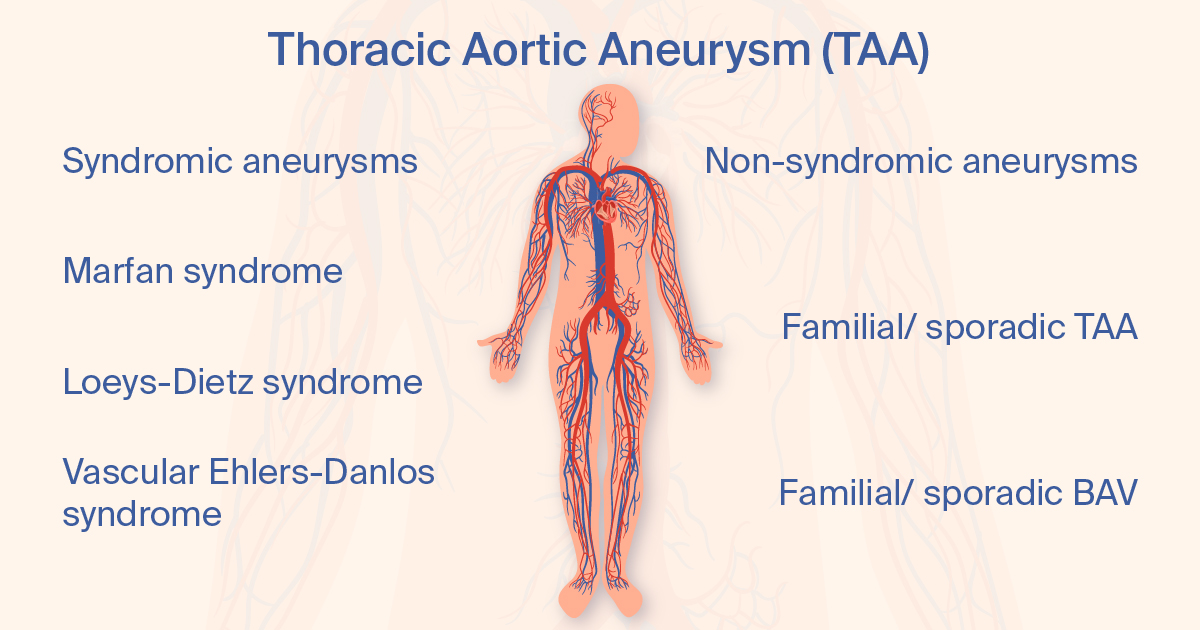HTAAD: Unraveling the Molecular and Clinical Complexity of Heritable Thoracic Aortic Disease
A special issue of Genes (ISSN 2073-4425). This special issue belongs to the section "Genetic Diagnosis".
Deadline for manuscript submissions: 20 April 2026 | Viewed by 217

Special Issue Editors
Interests: clinics and molecular bases of inherited connective tissue disorders and thoracic aorta aneurysms/dissections; the search for new related genes
Special Issues, Collections and Topics in MDPI journals
Interests: aortic diseases; interventional cardiology; cardiovascular imaging
Interests: valvular heart disease; diseases of the aorta; hypertrophic cardiomyopathy; diastolic function; definition of normalcy; primary care cardiology; preclinical left ventricular dysfunction; chronic heart failure; echocardiography; guidelines implementation
Special Issues, Collections and Topics in MDPI journals
Special Issue Information
Dear Colleagues,
Thoracic aortic aneurysms are relatively common in the general population. The rupture and/or dissection of these aneurysms are among the most feared complications and remain a leading cause of death in the developed world. The early clinical diagnosis of acute thoracic syndromes—including differential diagnosis with other cardiovascular and non-cardiovascular conditions—and appropriate management may reduce the burden of acute mortality.
Heritable thoracic aortic aneurysms and dissections (HTAADs) are classified into two categories, including syndromic—mostly rare multisystemic hereditary connective tissue disorders—and non-syndromic forms, in which an aortic aneurysm/dissection represents the primary, and often sole, clinical manifestation. Many associated genes have been identified in both categories, though several remain unknown. Therefore, even after clinical diagnosis, the diagnostic yield of genetic testing may be suboptimal.
The clinical context is crucial in these heterogeneous conditions, as some genes relate to both syndromic and non-syndromic forms, and a single gene may be associated with a spectrum of pathologies. Moreover, there is a phenotypic continuum between syndromic and non-syndromic HTAADs, with systemic manifestations that do not meet the diagnostic criteria for syndromic disorders and that test negative for known associated genes.
This Special Issue welcomes the submission of research articles on HTAADs that explore such scenarios using broad-spectrum genetic analyses (e.g., NGS, WES, and WGS) and genotype–phenotype correlations. Studies investigating pathogenic mechanisms using omics technologies (e.g., proteomics and metabolomics) are also relevant. Submissions reporting newly discovered genes, genotype–phenotype correlations in patient cohorts or specific families, in vitro tissue and cell studies, pathological anatomy analyses, imaging studies, and reviews are also welcome. Finally, contributions focused on iconodiagnostics in this clinical context will also be accepted.
Prof. Guglielmina Pepe
Prof. Dr. Rossella Fattori
Dr. Stefano Nistri
Prof. Dr. Yskert von Kodolitsch
Guest Editors
Manuscript Submission Information
Manuscripts should be submitted online at www.mdpi.com by registering and logging in to this website. Once you are registered, click here to go to the submission form. Manuscripts can be submitted until the deadline. All submissions that pass pre-check are peer-reviewed. Accepted papers will be published continuously in the journal (as soon as accepted) and will be listed together on the special issue website. Research articles, review articles as well as short communications are invited. For planned papers, a title and short abstract (about 250 words) can be sent to the Editorial Office for assessment.
Submitted manuscripts should not have been published previously, nor be under consideration for publication elsewhere (except conference proceedings papers). All manuscripts are thoroughly refereed through a single-blind peer-review process. A guide for authors and other relevant information for submission of manuscripts is available on the Instructions for Authors page. Genes is an international peer-reviewed open access monthly journal published by MDPI.
Please visit the Instructions for Authors page before submitting a manuscript. The Article Processing Charge (APC) for publication in this open access journal is 2600 CHF (Swiss Francs). Submitted papers should be well formatted and use good English. Authors may use MDPI's English editing service prior to publication or during author revisions.
Keywords
- syndromic and non-syndromic HTAAD
- Loeys–Dietz syndrome
- Marfan syndrome
- vascular Ehlers–Danlos syndrome
- bicuspid aortic valve
- genotype–phenotype correlation
- next-generation sequencing (NGS) and omics technologies
- extracellular matrix
- TGF-β signaling pathway and smooth muscle cell contraction genes
- iconodiagnostic
Benefits of Publishing in a Special Issue
- Ease of navigation: Grouping papers by topic helps scholars navigate broad scope journals more efficiently.
- Greater discoverability: Special Issues support the reach and impact of scientific research. Articles in Special Issues are more discoverable and cited more frequently.
- Expansion of research network: Special Issues facilitate connections among authors, fostering scientific collaborations.
- External promotion: Articles in Special Issues are often promoted through the journal's social media, increasing their visibility.
- Reprint: MDPI Books provides the opportunity to republish successful Special Issues in book format, both online and in print.
Further information on MDPI's Special Issue policies can be found here.








